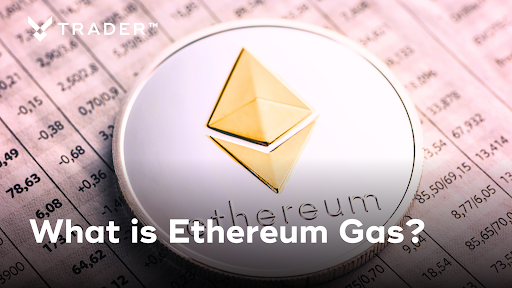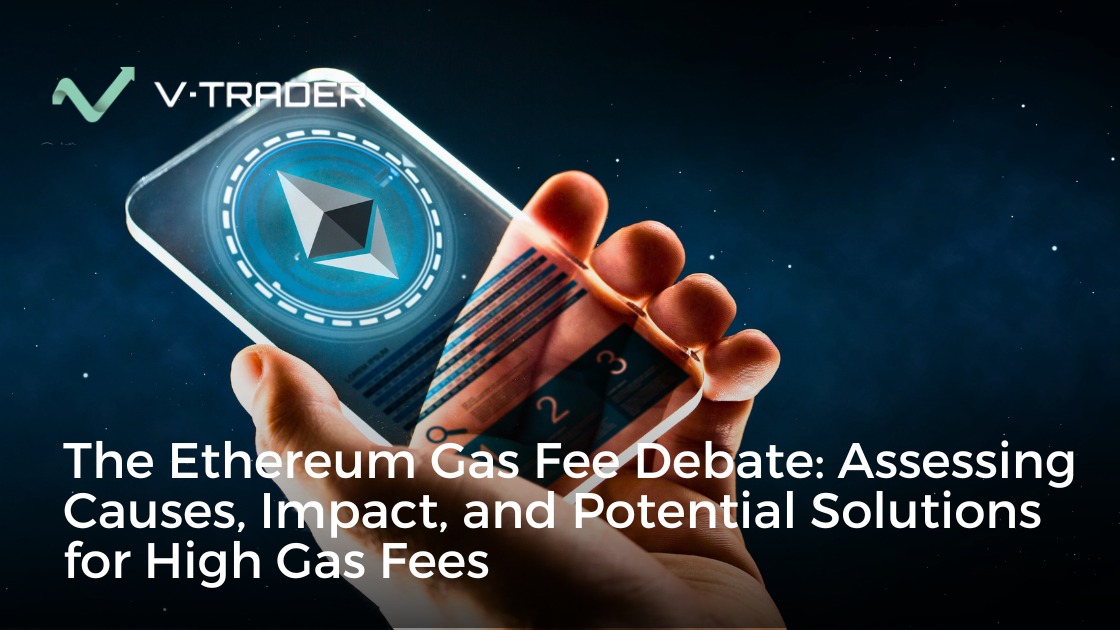Ethereum Gas: The Cost of Computation
Ethereum introduced more than a cryptocurrency. It launched a framework for decentralized logic. The moment it enabled smart contracts, it also created the need for something less visible but just as essential: gas.When you use Ethereum, you’re interacting with a global computer. That computation has a cost. Gas is the way the network tracks and charges for it.
What Gas Is and Why It Exists
Every transaction on Ethereum—sending ETH, minting an NFT, interacting with a smart contract—requires processing. Gas measures how much work your transaction demands from the Ethereum Virtual Machine (EVM).
You don’t store gas in your wallet. It’s not a token. It’s a unit that defines effort. Ethereum doesn’t give you compute time for free. You pay for it in ETH. The price you pay depends on two things: how much gas your transaction consumes, and how much you’re willing to spend per unit of gas.
You’ll always be asked to define two parameters:
Gas Limit: how much work you’re willing to fund.
Gas Price: how much ETH you’re willing to pay for each unit.
If your transaction exceeds its gas limit, it fails. The network keeps the ETH you spent up to that point. Your transaction won’t go through, but you still pay for what was used. Ethereum handles failure in a strict, resource-conscious way. That’s what keeps it functional.
Gas limits abuse. Infinite loops and inefficient code won’t take down the chain. Ethereum cuts off excess computation by design.
Pricing Execution
The actual fee you pay equals Gas Used × Gas Price. The first is determined by the network. The second is set by you.
Simple transfers are cheap. A basic ETH transfer uses about 21,000 units of gas. If you’re using a contract-heavy dApp, expect far more. A single DeFi action could easily consume 300,000 gas units or more, especially if it calls multiple functions.
The price you attach to gas—usually in Gwei—controls how fast your transaction is included in a block. Validators pick higher-paying transactions first. During low activity, you can get by with lower bids. When the network’s congested, it costs more to get in.
You’ll notice spikes during token launches, airdrops, or major news cycles. Your transaction will either wait or get dropped unless you’re willing to raise the price. These price fluctuations are a feature of a demand-driven system.
Where Your Gas Fee Goes
When you pay gas, that ETH doesn’t disappear. It goes to validators—participants in Ethereum’s proof-of-stake system. These are people and institutions who’ve staked ETH to help secure the network and validate blocks. Validators don’t get all of it. Since the London upgrade (EIP-1559), the base fee portion of your transaction is burned. That reduces ETH supply. You can still tip validators, and the more you tip, the more likely they are to prioritize your transaction.
The burn mechanism turns gas into more than just compensation. It becomes a deflationary lever. The more Ethereum is used, the more ETH is burned. That strengthens the value proposition of ETH as an asset while aligning usage with scarcity.
Gas and Network Health
Gas is also a defense mechanism. It stops bad actors from flooding the network with zero-cost transactions. Every action has a financial cost, which discourages spam and denial-of-service attacks.
Ethereum doesn’t rely on centralized gatekeeping. It relies on pricing pressure. If someone wants to disrupt the system, they’ll have to pay a steep and rising price for the opportunity. That deterrent is effective. At the same time, gas serves as a signal. High fees don’t always reflect inefficiency. Sometimes they reflect demand. When everyone’s transacting, gas climbs. When activity slows, fees settle. You can use this rhythm to your advantage by choosing your moments carefully.
What It Means for You
If you’re a regular user, gas is one of the first things you feel. It affects how much it costs to mint, swap, stake, or vote. It changes the calculus of what’s worth doing on-chain.
Gas fees add friction. For small transactions, they can become the largest part of the cost. That’s one reason why dApps that batch or compress operations tend to grow faster. It’s also why certain users wait until weekends or low-volume hours to transact.
If you’re building on Ethereum, gas shapes user behavior. Poorly optimized contracts cost your users more. Over time, that pushes people away. Ethereum makes you feel your architecture decisions in real time.
Gas-efficient design isn’t optional anymore. It’s part of the user experience.
DeFi and the Gas Ceiling
DeFi protocols are gas-heavy by nature. A simple action might involve several smart contracts, each calling functions, writing data, and adjusting balances. Those operations aren’t free.
In 2023, DeFi accounted for more than 30% of all gas spent on Ethereum. Platforms that failed to optimize for gas struggled to retain casual users. Even advanced users started migrating to alternatives with cheaper execution. Gas becomes an adoption filter. When costs are too high, experimentation slows. New users hesitate. Only high-volume wallets or bots remain active. That’s not the kind of growth Ethereum aims for. The pressure to reduce gas costs doesn’t just fall on Ethereum itself. It falls on every developer writing contracts and every user choosing where to transact.
Layer 2s: Scaling Without Leaving Ethereum
Layer 2s exist because Ethereum needs help scaling. These are separate systems that process transactions off-chain and post results to Ethereum in batches. You still benefit from Ethereum’s security, but you avoid most of its congestion.
Platforms like Arbitrum, Optimism, and zkSync offer dramatically lower fees. The tradeoff is added complexity. You might need to bridge assets, manage new wallets, or understand rollup-specific quirks.
Even so, Layer 2 adoption is rising. Most serious projects support them now. If you’re trying to reduce fees without switching ecosystems entirely, this is where you go.
You’ll still pay gas eventually. Every Layer 2 relies on Ethereum for settlement. Those costs are shared across many users, making them negligible per transaction. It’s an elegant solution to a scaling problem.
Protocol Upgrades That Changed the Game
EIP-1559 introduced predictability. Before it, gas pricing was a guessing game. Now, Ethereum calculates a base fee per block and adjusts it based on demand. You can still add a tip to get faster confirmation, but you’re no longer flying blind.
The burn mechanism changed the ETH supply curve. For the first time, high usage reduced the total ETH in circulation. That created a new dynamic: activity drove scarcity.
Looking ahead, Ethereum will implement more upgrades that influence gas. EIP-4844 (proto-danksharding) will improve data availability for Layer 2s. Sharding will break Ethereum into smaller pieces that process in parallel. These changes won’t eliminate gas. They’ll stretch it further.
How Developers Reduce Gas Costs
Smart contracts aren’t all created equal. Some are bloated. Others are clean and lean. The difference shows up in your wallet.
Gas optimization involves using storage efficiently, minimizing unnecessary calls, and avoiding redundant logic. Every line of Solidity should be justified. Every loop has a cost. Every state write multiplies fees.
Gas tools are widely available. Foundry and Hardhat offer profiling. Security audits often include gas analysis. If you’re building for real users, gas usage is part of your product quality.
Optimized contracts cost less to interact with. They load faster. They fail less often. They help your dApp stand out.
What You Can Do as a User
Gas isn’t always predictable, but it can be managed.
You can track network activity and time your transactions during quieter periods. Early mornings (UTC) or weekends are often less congested. You can use wallets that offer dynamic gas estimation and let you customize tips.
If you’re doing multiple transactions, consider batching them. Some wallets support it. Some contracts are built for it. Every time you reduce the number of individual calls, you reduce overhead.
You can also explore Layer 2s for most activity and only return to Ethereum for final settlement or major transactions.
The Bigger Picture
Gas enforces accountability. It forces you to value each action. It encourages developers to write better code and gives users a reason to pay attention.
It also acts as an indicator. Spikes in gas don’t just mean the network is busy. They signal movement—real usage, meaningful on-chain activity, or collective attention. If you track gas trends over time, you can read the rhythm of Ethereum’s economy.
That rhythm changes fast. The chain isn’t static. Protocols evolve. User behavior shifts. Gas reflects it all.
Final Perspective
Ethereum gas is not a flaw. It’s a feature that gives shape to activity and value to computation. You may find it inconvenient at times, but it’s also what makes the network secure and sustainable.
Learning how gas works—where the cost comes from, how it’s priced, what influences it—gives you control. It allows you to move strategically, optimize your costs, and understand Ethereum’s deeper mechanics.
The system doesn’t abstract complexity. It surfaces it. That transparency is intentional.
Every transaction has a cost. Ethereum makes you feel it.
References
[1] What is ETH gas and how do fees work in Ethereum? – Bitcoin.com
[2] How Gas Fees Work on the Ethereum Blockchain – Investopedia
[3] What are Ethereum gas fees? ETH fees explained – MoonPay
[4] ETH Gas Fees: What Are Ethereum Gas Fees – Crypto.com
[5] Ethereum Gas Fee Definition | Investing Dictionary | U.S. News
[6] Ethereum FY 2023 Financial Overview – Artemis Crypto Fundamentals
[7] Ethereum Gas Fee Concept Explained – LCX
[8] Demystifying Ethereum Gas and Gas Fees: A Comprehensive Guide
[9] What Are Ethereum Gas Fees? How ETH Network Fees Work
[10] Gas Fees Explained: Why Ethereum Transactions Can Be Expensive
[11] How to Reduce Ethereum Gas Fees
[12] Layer 2 Scaling Solutions: Ethereum’s Path to Scalability
[13] EIP-1559: Fee Market Change for Ethereum’s Berlin Upgrade
[14] Ethereum 2.0: The Serenity Update

Steve Gregory is a lawyer in the United States who specializes in licensing for cryptocurrency companies and products. Steve began his career as an attorney in 2015 but made the switch to working in cryptocurrency full time shortly after joining the original team at Gemini Trust Company, an early cryptocurrency exchange based in New York City. Steve then joined CEX.io and was able to launch their regulated US-based cryptocurrency. Steve then went on to become the CEO at currency.com when he ran for four years and was able to lead currency.com to being fully acquired in 2025.


